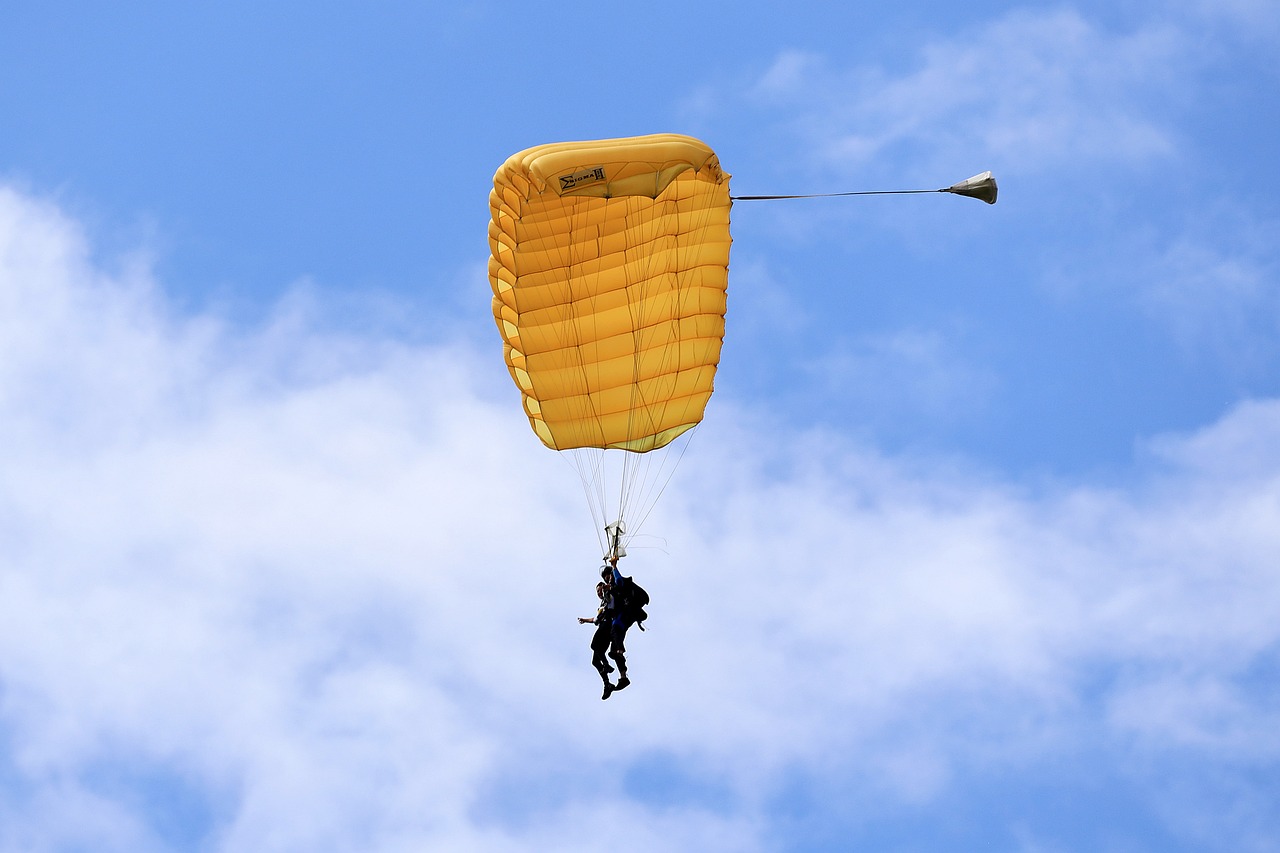Skydiving gear is your lifeline in the air, so keeping it in top-notch condition is essential. With proper maintenance, your equipment can last longer and perform better, offering you safer, smoother jumps every time. From the parachute to the helmet, each piece of skydiving gear has unique care requirements. Here’s a straightforward guide to ensure your skydiving equipment remains in excellent shape, letting you focus on enjoying your next adventure. Make sure to shop at SkydiveShop.com for all your skydiving gear.
—
- Regularly Inspect Your Parachute and Lines
The parachute, both main and reserve, is arguably the most important part of your gear, and regular inspections are crucial to keeping it functional. Before every jump, check for visible damage like tears or frays in the fabric. Even a small tear can grow, affecting the canopy’s performance, so any issues should be addressed promptly by a professional rigger.
The lines are just as important as the parachute fabric itself. Over time, lines can stretch, fray, or develop knots, all of which affect the canopy’s ability to open properly. Line stows should also be inspected since loose or damaged stows can cause poor line deployment.
*Pro tip:* Use a dedicated storage bag for your parachute to protect it from sunlight and moisture, both of which can weaken the fabric over time. Avoid storing it in extreme temperatures, and never put it away wet.
—
- Handle the Container with Care
The container, or rig, holds your parachutes and is vital to the overall performance of your equipment. After each jump, inspect it for any signs of wear and tear, especially around high-stress areas like the straps, stitching, and harness. Dirt and debris can build up over time, particularly around the closing loops, which might weaken the material.
When packing or adjusting your rig, ensure that nothing is loose or out of place. The main and reserve handles should always be secure and free of obstructions, as this is critical for emergency situations. A broken or compromised handle could make it difficult to deploy your parachute, so regular checks are essential.
*Pro tip:* Avoid dragging the rig on the ground, as this can damage the fabric and lead to quicker wear. Using a protective cover or bag can help when transporting it to and from the jump site.
—
- Keep Your Helmet Clean and Free of Scratches
Your helmet is designed to protect your head and face during jumps, so keeping it in excellent condition is important for both safety and comfort. Clean it regularly, especially the visor or face shield, which can quickly accumulate smudges or scratches that obstruct your view. Use a soft, microfiber cloth and gentle cleaning solution to remove dirt without scratching the surface. Avoid using harsh chemicals, which can damage the visor’s coating.
The inner padding should also be inspected and cleaned regularly, as sweat and grime can accumulate after several jumps. Most helmets have removable linings that can be washed and dried, keeping your helmet fresh and comfortable.
*Pro tip:* Store your helmet in a soft case to avoid accidental scuffs or dents, and avoid putting heavy items on top of it when it’s packed away.
—
- Check Your Altimeter and AAD (Automatic Activation Device)
Your altimeter and AAD are your main tools for monitoring altitude, making them essential to a safe jump. Start by checking that your altimeter is calibrated correctly before each jump. Analog and digital altimeters have different maintenance needs, but most require periodic calibration to stay accurate.
The AAD is designed to deploy your reserve parachute automatically if you reach a certain altitude without deploying it manually. It’s a lifesaving device, so keeping it in perfect working order is vital. Make sure the battery is charged, and check that the device is within its service date. Some AADs require professional servicing every few years, so consult the manufacturer’s recommendations.
*Pro tip:* Store your altimeter and AAD in a dry, dust-free place, and avoid exposing them to extreme temperatures, which can impact performance and accuracy.
—
- Properly Pack and Store Your Jumpsuit
Your jumpsuit is designed to reduce drag and make your descent smoother, so keeping it clean and undamaged is key to its effectiveness. After each jump, shake off any dirt or debris, and inspect for any rips, especially along the seams and zipper. When cleaning, follow the manufacturer’s instructions to avoid shrinking or damaging the fabric.
Store your jumpsuit in a cool, dry area, and fold it neatly to avoid wrinkles that might affect the fabric’s flexibility. Regular maintenance on the zippers and seams can also prolong the jumpsuit’s life, making it more comfortable and reliable over time.
*Pro tip:* Washing your jumpsuit occasionally with a mild detergent helps to keep the fabric strong, clean, and breathable.
—
Final Thoughts: Your Gear Deserves the Best
Maintaining your skydiving gear is more than just keeping it functional—it’s about creating peace of mind on every jump. With regular care and attention, your equipment will reward you with peak performance and a safer experience each time you take to the skies. Remember, proper storage, regular inspections, and timely repairs are simple steps that go a long way in preserving the life of your gear and enhancing every skydiving moment. Happy flying!


